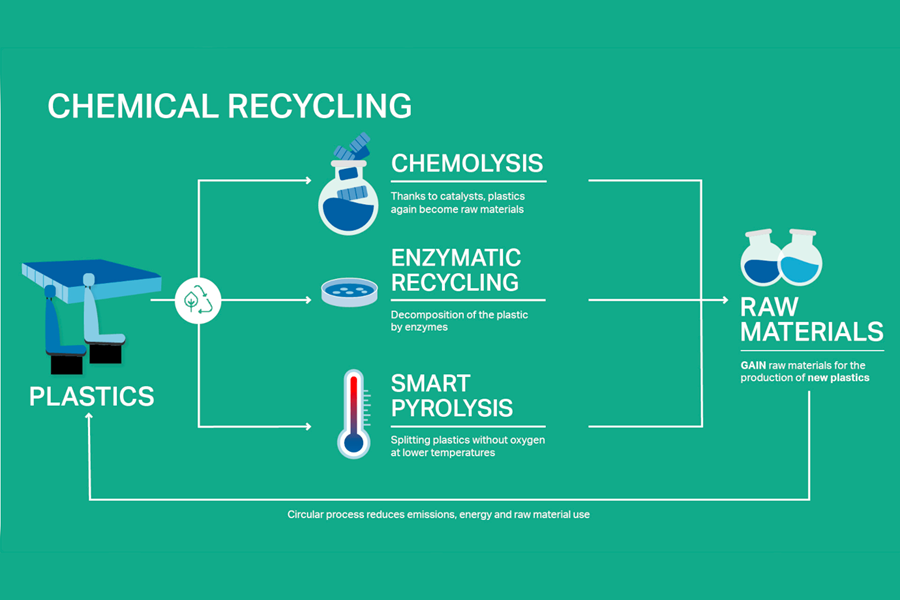By Ian Brundrett

For decades our awareness of the harm plastic production and its wasteful byproducts produce have drastically increased. The most recent revelation is that the degradation of plastics into microplastics that cannot biodegrade are invading our every day lives. They end up in the ocean, in our waterways, in our soil, in our food, and eventually, our bodies. A study as recent as March 2024 shows that people with microplastics and nanoplastics in their arteries are much more likely to have fatal health conditions.
What about all the plastic we recycle you may ask? The reality is that most of the plastic we put into our recycling bins ends up in a landfill anyway. Excess food waste in the plastic will cause it to be dumped. Plastic degrades after only 1 or 2 uses and it becomes more toxic the more it is reused. There are also many different types of plastics and none of them can be melted down together and unfortunately it’s very expensive to collect and sort. New plastic, on the other hand, is cheap and easy to make and not many businesses are in the market to spend extra money to sort old plastic when they could just make more of it. Therefore, only about 5% of the plastic we recycle actually gets reused. The rest all gets dumped into landfills or gets exported to countries that we pay to accept garbage, where it also just gets dumped or burned.
Because this material has become so commonplace and there is no effort to stop its production, scientists and companies have been researching ways to more effectively recycle and reuse plastic to reduce its production. Currently, plastic is mechanically and physically recycled. It’s sorted and broken down into granules which is then used as raw material. As stated previously, this method is highly ineffective at maximizing how much plastic can actually be reused. Therefore, 3 new chemical methods are being researched and attempts to implement them are underway.
Chemolysis recycling – this method begins with a mechanical process of sorting plastic. Then, using different chemical solvents and heat, the plastic’s building blocks, called polymers, are broken down into smaller building blocks called monomers. Then, contaminates are identified and removed from the monomers. The decontaminated monomers are then fed back into regular plastic production.
Enzymatic recycling – enzymes are proteins that are commonly used in chemistry to speed up chemical reactions. In this case, enzymes are used to break down the polymers into momomers. Enzymatic recycling is an exceptional breakthrough because using enzymes to break down plastic’s polymers has no limitations on the types of plastics that can be recycled, meaning that they don’t need to be sorted and that we don’t need to dump the plastics that can’t be broken down mechanically. Also, it doesn’t compromise the structural integrity of the plastic, meaning there is no loss in quality and it will not become increasingly toxic between uses.
Pyrolysis recycling – this method involves melting plastics at extreme temperatures, usually around 500° celsius, or 932° fahrenheit, in the absence of oxygen. It is vaporized in a reactor and turned into oil. The oil is then used to make new plastic products.
These new chemical methods of recycling bring a positive solution to the issue of overproduction, waste, and overall health problems associated with microplastics. However the long term effectiveness of these chemical processes are not fully tested yet. There could be high energy costs, toxic byproducts, or unsustainable labor to operate them. Unfortunately, humans have irreversibly altered the state of the Earth by introducing this man made material and it will never go away. The only way to truly stop plastic waste is to stop producing it all together! That’s why it’s incredibly important for all of us to be more conscious of what we are buying and where we are sourcing our products from. Invest in reusable materials, repurpose things you use instead of throwing them away, buy products with biodegradable packaging, and properly disposing of waste are small efforts we can make individually to try and reduce our impact.
https://www.sciencedirect.com/science/article/pii/S0013935120305703
https://www.cnn.com/2024/03/06/health/nanoplastics-heart-attack-study-wellness/index.html